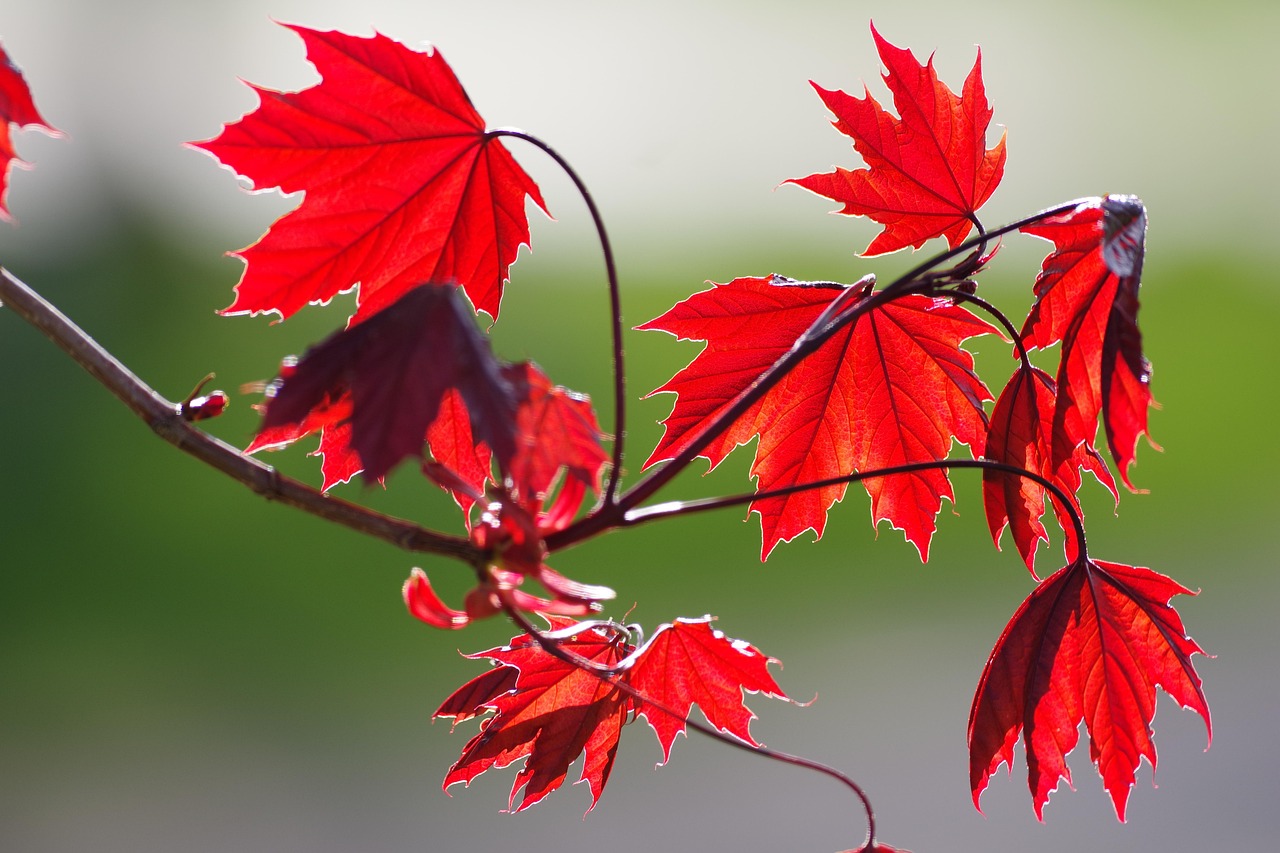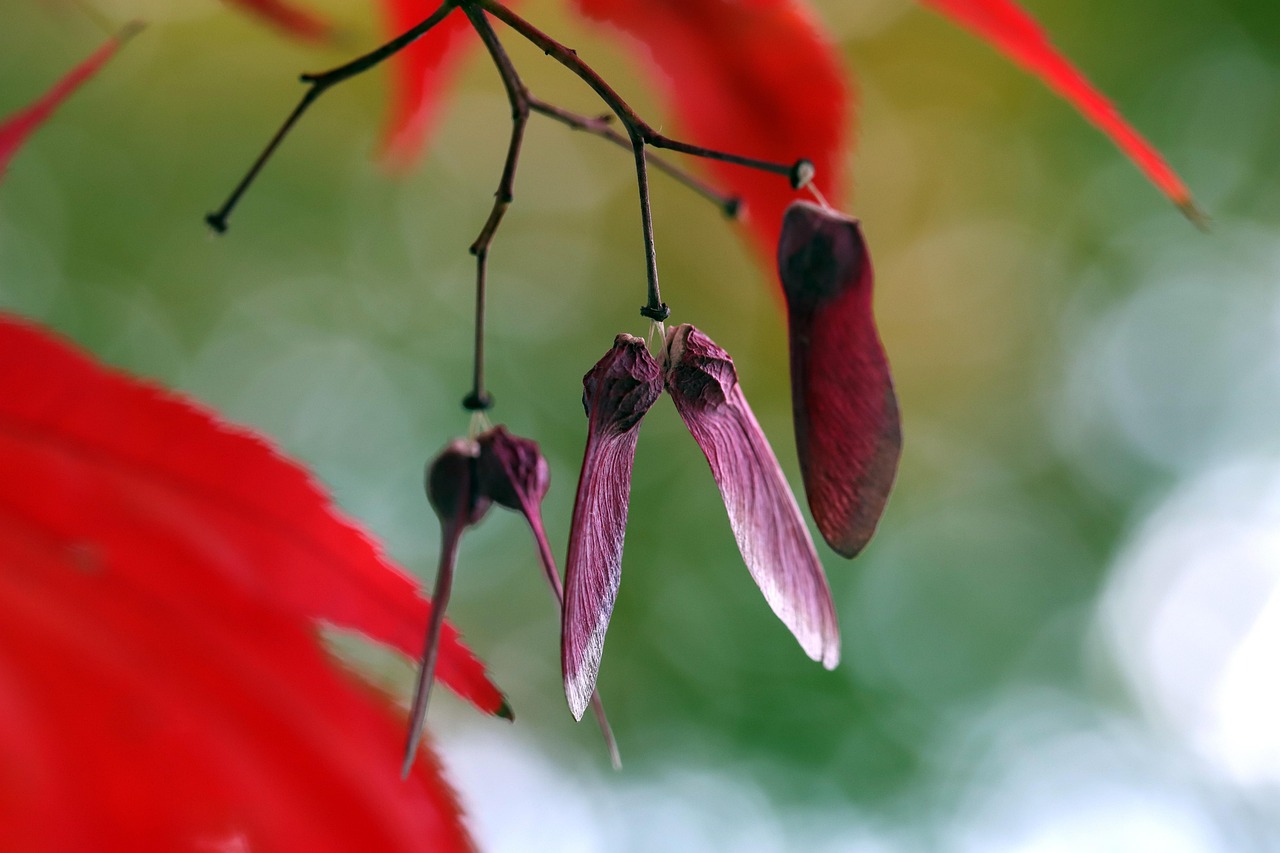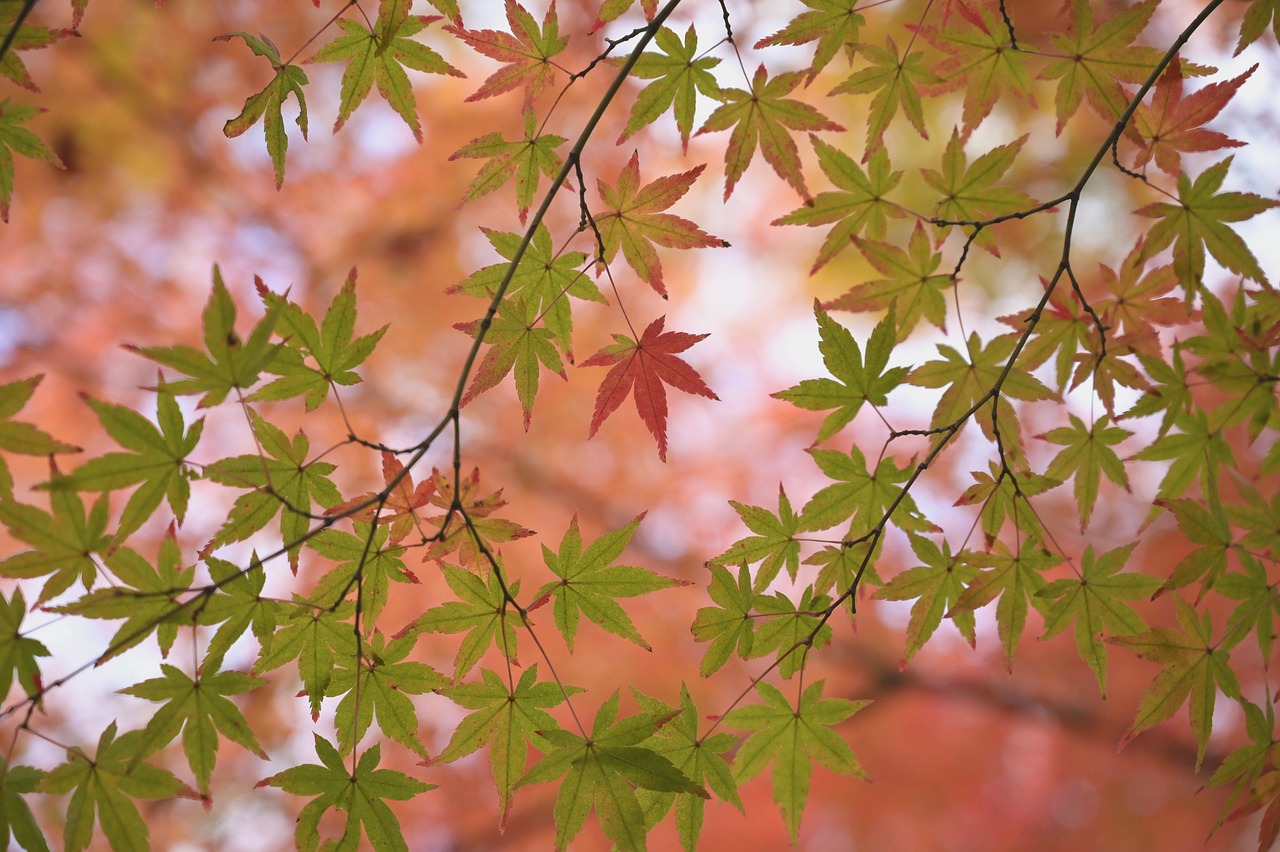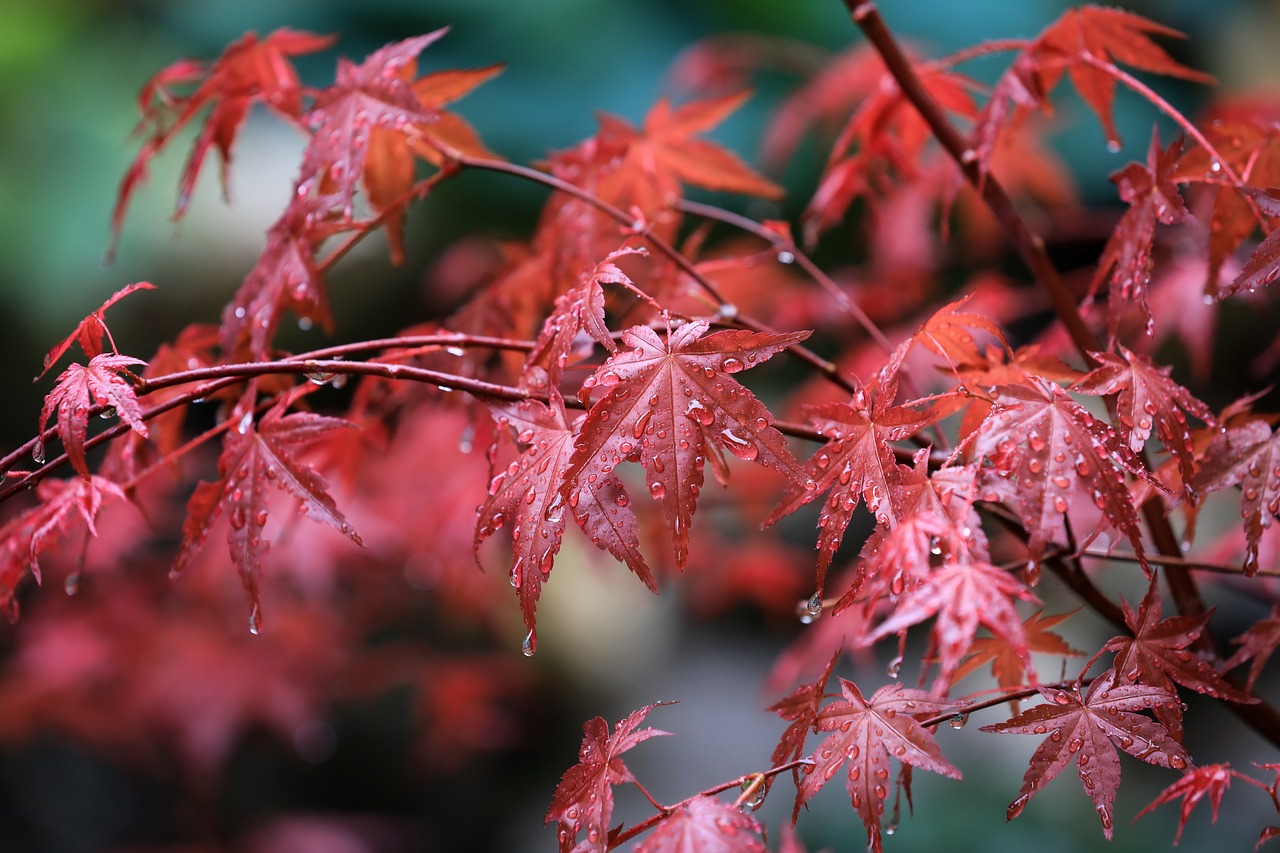Red maples typically produce seeds in the spring, usually between March and May. The seeds are dispersed shortly after they ripen, which occurs approximately 4 to 6 weeks after flowering, allowing for seed spread before summer.
The red maple, scientifically known as Acer rubrum, is a widespread tree native to North America. It is well-known for its striking red foliage in the fall and its adaptability to different soil types and environments. In addition to its aesthetic appeal, the red maple plays a vital role in the ecosystem by providing habitat and food for various wildlife species.
Understanding the timing of seed production and dispersal in red maples is essential for several reasons. First, it helps in managing forest ecosystems effectively. Second, it plays a crucial role in the regeneration of maple populations in both natural and cultivated environments. The seeds of red maples are unique due to their structure and method of dispersal, which influences how and where new trees will grow.
The flowering period of red maples typically begins in early spring, when the trees are still bare of leaves. This is a critical time for pollination, as various insects, especially bees, are attracted to the flowers. The successful pollination leads to the formation of seeds, setting the stage for their dispersal.
Seed Production Timeline

The seed production timeline of red maples can be broken down into several key phases:
- Flowering: This occurs from late winter to early spring, usually in March or early April.
- Pollination: Following flowering, pollination takes place. This process is often completed within a few weeks.
- Seed Formation: After successful pollination, seed formation begins. This stage lasts about 4 to 6 weeks.
- Seed Ripening: The seeds ripen in late spring, generally by May.
- Seed Dispersal: Once ripe, seeds are dispersed from late spring into early summer.
The entire process from flowering to seed dispersal typically spans several months but peaks in late spring. The timing can vary slightly based on geographic location and environmental conditions such as temperature and rainfall.
| Phase | Timeframe |
|---|---|
| Flowering | March – Early April |
| Pollination | March – April |
| Seed Formation | Late April – May |
| Seed Ripening | May |
| Seed Dispersal | Late Spring – Early Summer |
The seeds of red maples are known as samaras. These winged seeds are designed for wind dispersal, allowing them to travel significant distances away from the parent tree. The shape and lightweight nature of samaras enable them to be carried by wind currents, increasing the chances of successful germination in suitable locations.
Once dispersed, red maple seeds can remain viable in the soil for extended periods. They typically germinate best when conditions are favorable—adequate moisture and sunlight are crucial factors. This adaptability allows red maples to colonize various habitats, contributing to their widespread presence across North America.
The seed dispersal process not only impacts the growth of new trees but also affects forest dynamics. Red maples can thrive in diverse environments, from wetlands to uplands, making them an important species for maintaining biodiversity. Understanding their seed dispersal timeline aids in conservation efforts and sustainable forestry practices.
Factors Influencing Seed Dispersal
The seed dispersal of red maples is influenced by various environmental and biological factors. Understanding these influences is essential for recognizing how red maples adapt and thrive in different ecosystems. Several key factors play a role in the effectiveness of seed dispersal.
Wind Patterns
Wind is the primary mechanism for dispersing red maple seeds. The design of samaras allows them to be carried over long distances. However, specific wind patterns can significantly affect dispersal outcomes. Here are some aspects to consider:
- Wind Speed: Stronger winds can carry seeds farther from the parent tree, while calm conditions may result in seeds falling close to the trunk.
- Wind Direction: Consistent wind from a particular direction can lead to concentrated seed dispersal in that area.
- Weather Events: Storms or gusts can create opportunities for seeds to travel beyond their typical range.
Topography and Habitat
The physical landscape also plays a crucial role in seed dispersal. Different terrains affect how seeds land and germinate. Consider these factors:
- Elevation: In hilly or mountainous areas, wind patterns may change, impacting how far seeds can be dispersed.
- Water Bodies: Proximity to rivers or lakes can help seeds float away, increasing their chances of reaching fertile ground.
- Vegetation Density: Areas with dense vegetation may hinder seed movement, while open spaces allow for easier dispersal.
Seed Viability and Germination Conditions
After dispersal, the viability of red maple seeds depends on several environmental conditions. Understanding these conditions can help predict successful germination rates. The following factors are crucial:
Moisture Levels
Moisture is one of the most critical factors for seed germination. Red maple seeds require adequate moisture in the soil to initiate the germination process. Here are some points to consider:
- Soil Moisture: Seeds in well-drained, moist soils have higher germination rates compared to those in dry or overly saturated soils.
- Seasonal Rainfall: Early spring rains coincide with the time when seeds are dispersed, creating ideal conditions for germination.
Temperature
The temperature of the environment directly affects seed germination. Red maple seeds have specific temperature requirements:
- Optimal Range: The ideal temperature range for germination is between 65°F and 75°F (18°C to 24°C).
- Cold Stratification: Some seeds may require exposure to cold temperatures before they can germinate, mimicking natural winter conditions.
Light Requirements
Light is another essential factor influencing the germination of red maple seeds. Here’s how it impacts their growth:
- Sunlight Exposure: Seeds that are buried too deeply may not receive enough light for successful germination.
- Shade Tolerance: Red maples are somewhat shade-tolerant but still require some light during their early growth stages.
The Role of Wildlife in Seed Dispersal
In addition to wind, wildlife plays an important role in the dispersal of red maple seeds. Various animals contribute to this process in different ways:
Birds and Mammals
Certain birds and mammals consume the seeds and inadvertently assist in their dispersal. Key points include:
- Avid Feeders: Species such as squirrels and birds eat the seeds, moving them away from the parent tree.
- Digestion Process: Some seeds can pass through the digestive systems of animals unharmed, allowing them to germinate after being dropped in new locations.
Insects
Insects also contribute to seed dispersal through various behaviors:
- Seed Predation: While some insects feed on seeds, others may transport them to different locations.
- Nesting Material: Certain insects may use seed pods in their nests, which can lead to accidental dispersal.
The interaction between red maples and wildlife highlights the complex relationships within ecosystems. These relationships underscore the importance of conserving habitats where red maples thrive, ensuring both plant and animal species continue to flourish together.
The Impact of Climate Change on Seed Dispersal
Climate change poses significant challenges to ecosystems globally, including the seed dispersal processes of red maples. Various aspects of climate change may influence how these trees reproduce and regenerate:
Temperature Changes
Rising temperatures can affect the timing of flowering and seed production. Key considerations include:
- Ecosystem Shifts: As climates warm, suitable habitats for red maples may shift northward or to higher elevations.
- Altered Germination Rates: Warmer temperatures may lead to changes in germination timing, impacting subsequent growth cycles.
Changes in Precipitation Patterns
The variability in rainfall can result in extreme conditions affecting seed viability:
- Drought Stress: Extended periods of drought could reduce soil moisture levels necessary for seed germination.
- Flooding Risks: Conversely, increased rainfall may lead to flooding, which can drown seedlings or wash away seeds before they germinate.

The potential impact of climate change on red maple seed dispersal underscores the need for ongoing research and monitoring efforts. By understanding these dynamics, effective conservation strategies can be developed to safeguard these vital tree populations and their associated ecosystems.
Management Practices for Red Maple Seed Dispersal
E

ffective management practices are essential for ensuring the successful dispersal and growth of red maple populations. These practices focus on enhancing natural regeneration, minimizing adverse effects from human activities, and promoting healthy ecosystems. Several strategies can be employed to support red maple seed dispersal and establishment.
Habitat Restoration
Restoring habitats where red maples grow can significantly improve their chances of successful seed dispersal and germination. Key aspects of habitat restoration include:
- Removing Invasive Species: Invasive plants can outcompete red maples for resources. Removing these species helps create a more favorable environment for native trees.
- Enhancing Soil Quality: Improving soil health through organic amendments can boost seed germination rates and seedling survival.
- Creating Buffer Zones: Establishing buffer zones around water bodies can protect seedlings from flooding and erosion while providing a stable environment for growth.
Controlled Burns
Controlled burns can be an effective management tool in certain ecosystems. These burns help maintain healthy habitats by:
- Reducing Leaf Litter: Removing excess leaf litter allows more sunlight to reach the forest floor, enhancing germination conditions.
- Encouraging New Growth: Fire can stimulate the growth of red maples and other native species by clearing space and nutrients for new plants.
Seed Collection and Propagation
In some cases, active seed collection and propagation may be necessary to ensure the continuation of red maple populations, particularly in areas where natural regeneration is limited. This process involves several steps:
Seed Collection Techniques
Collecting seeds at the right time is crucial for successful propagation. Consider the following techniques:
- Timing: Seeds should be collected when they are fully mature but before they begin to disperse. This is typically in late spring to early summer.
- Using Proper Tools: Employ tools like seed bags or containers to collect seeds without damaging them.
Propagation Methods
Once seeds are collected, various propagation methods can be employed to grow new red maple trees:
- Direct Sowing: Seeds can be sown directly into prepared soil in a nursery or designated area.
- Cold Stratification: Some seeds may require a cold stratification process to mimic winter conditions before germination.
- Transplanting Seedlings: Growing seedlings in a controlled environment allows for better management of their growth before they are transplanted into natural settings.
The Role of Community Involvement
C

ommunity involvement is vital in supporting the seed dispersal and conservation efforts of red maples. Engaging local residents and organizations can foster greater awareness and action toward protecting these trees.
Educational Programs
Implementing educational programs can raise awareness about the importance of red maples and their role in local ecosystems. Consider these approaches:
- Workshops and Seminars: Hosting workshops on tree planting, care, and the ecological benefits of red maples can empower individuals to take action.
- School Programs: Integrating forestry education into school curricula can inspire future generations to value and protect red maples.
Community Planting Events
Organizing community planting events allows residents to actively participate in enhancing local red maple populations. This fosters a sense of ownership and responsibility toward the environment:
- Collaboration with Local Organizations: Partnering with environmental groups can help provide resources and expertise for successful planting days.
- Engaging Volunteers: Encouraging community members to volunteer promotes teamwork and strengthens community bonds around conservation efforts.
The Importance of Monitoring and Research
Monitoring red maple populations and their seed dispersal patterns is crucial for understanding their health and resilience. Ongoing research can provide valuable insights into how these trees adapt to changing conditions.
Long-Term Studies
Establishing long-term studies can help track changes in red maple populations over time. Key focus areas include:
- Population Dynamics: Monitoring the growth rates, survival, and reproduction of red maples helps assess overall population health.
- Disease Resistance: Researching disease impacts on red maples can lead to better management practices that enhance their resilience.
Data Collection Techniques
Utilizing advanced data collection techniques can improve research outcomes. Techniques may include:
- Remote Sensing: Using satellite imagery or drones can provide insights into forest cover changes and habitat conditions.
- Citizen Science Projects: Engaging community members in data collection efforts can expand research capabilities while fostering public interest in conservation.
The combination of effective management practices, community involvement, and ongoing research creates a comprehensive approach to ensuring the sustainability of red maple populations. By focusing on these areas, stakeholders can contribute to fostering resilient ecosystems where red maples can thrive for generations to come.
In addition to the management practices and community involvement discussed, understanding the ecological interactions involving red maples is crucial for their successful propagation. These trees play a significant role in forest ecosystems, influencing both plant and animal communities. Their seeds not only provide food for various species but also contribute to the overall health of the soil.
Ecological Contributions of Red Maples
Red maples contribute significantly to their environments in numerous ways. Their presence can lead to various positive ecological impacts:
- Habitat Creation: Red maples provide habitats for many species, including birds, mammals, and insects. The structure of the tree offers nesting sites and shelter.
- Soil Enrichment: The leaf litter from red maples decomposes and enriches the soil with nutrients, promoting healthy plant growth in surrounding areas.
- Water Regulation: Red maples are often found near water bodies. Their root systems help stabilize soil and regulate water levels, preventing erosion and maintaining water quality.
Climate Adaptation Strategies
As climate conditions continue to evolve, red maples may need to adapt their growth and reproductive strategies. Understanding how these trees can adjust is crucial for their survival:
- Drought Resistance: Red maples may develop deeper root systems over time, allowing them to access moisture during dry spells.
- Phenological Changes: Alterations in flowering and seed production timelines may occur as temperatures rise, impacting pollination and seed dispersal.
By studying these potential adaptations, researchers can better predict how red maples will respond to ongoing climatic changes and implement strategies to support their resilience.
Final Thoughts
The journey of red maples from seed production to successful germination and growth is a complex interplay of natural processes, environmental factors, and human intervention. Understanding when red maples have seeds and their dispersal timelines offers valuable insights into their reproductive strategies and ecological roles. As we face the challenges posed by climate change, maintaining healthy red maple populations becomes increasingly vital.
Effective management practices, community involvement, and ongoing research are essential components that contribute to the sustainability of red maple ecosystems. By fostering an environment where these trees can thrive, we not only support biodiversity but also enhance the resilience of our forests against changing environmental conditions.
As stewards of the land, it is our responsibility to ensure that future generations will continue to enjoy the beauty and ecological benefits of red maples. Through education, conservation efforts, and active participation in community initiatives, we can work together to protect these remarkable trees and the ecosystems they support.
In conclusion, red maples are more than just beautiful trees; they are crucial players in their ecosystems. Their seed dispersal timelines and adaptability illustrate the intricate connections within nature. By prioritizing their conservation and understanding their ecological significance, we pave the way for healthier forests and a more sustainable future.
